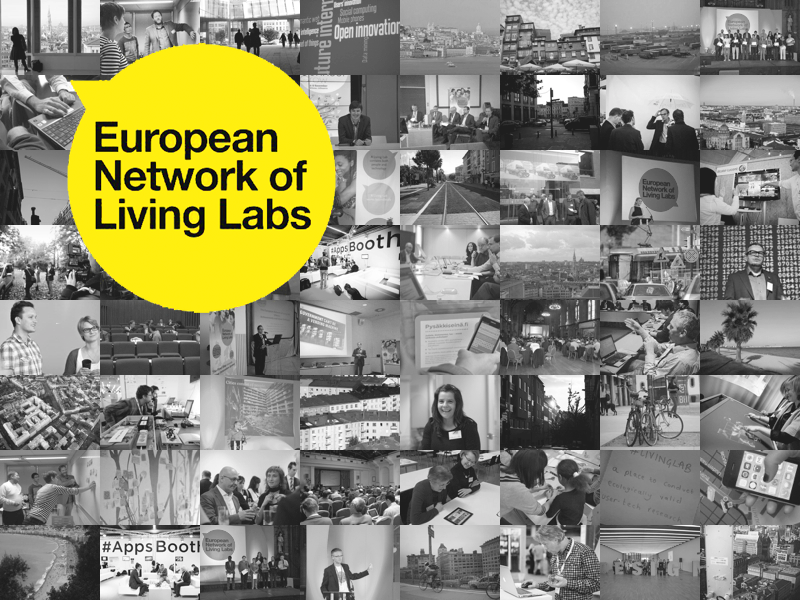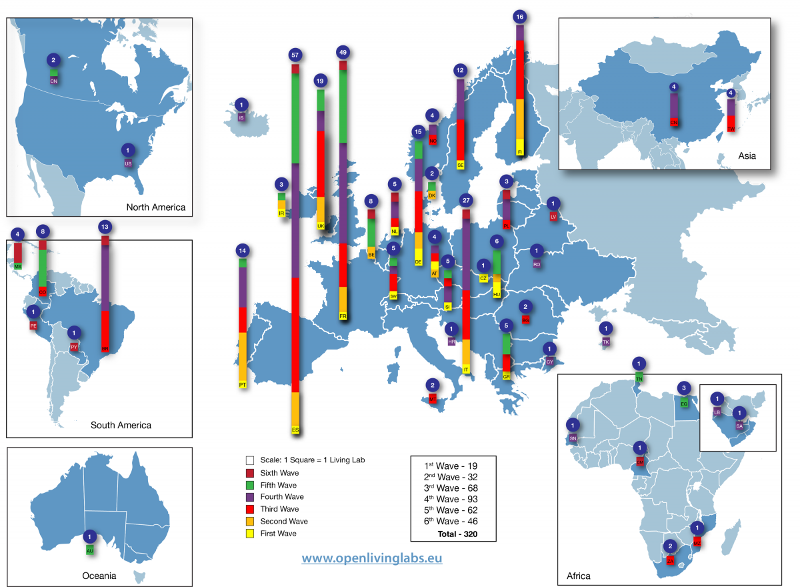Introducing ENoLL, the European Network of Living Labs
The European Network of Living Labs (ENoLL) is the international, independent non-profit association of bench-marked living labs with more than 340 accredited living labs worldwide.
What is ENoLL, and what is your role in the Europeana Creative project?
Living labs are real-life test and experimentation environments, where users and producers co-create innovations, in a trusted, open ecosystem that enables business and societal innovation. Living labs enable the co-creation of user-driven and human-centric research, development and innovation of technologies, products and services focused on the well-being of people.
A living lab employs four main activities:
- Co-creation: co-design by users and producers.
- Exploration: discovering emerging usages, behaviours and market opportunities.
- Experimentation: implementing live scenarios within communities of users.
- Evaluation: assessment of concepts, products and services according to socio-ergonomic, socio-cognitive and socio-economic criteria.
The living lab movement is a relatively new concept, so ENoLL also acts as a point of reference for public and private organisations engaged in experimentation environments and those interested in enhancing innovation on a systemic basis. One of the characteristics of the ENoLL network is its diversity. As innovation ecosystems, living labs are active in many different domains (e.g., health) or/and can have a more territorial component (e.g., cities, regions) with a multi-thematic approach. Culture, art, design and creativity are important domains in the ENoLL community, and we’re participating in numerous different European initiatives focused on supporting creative industries.

Our role in the Europeana Creative adventure is multidisciplinary. We will be taking an active role organising the second and third round of challenge events whereby creative entrepreneurs and developers will be asked to re-use Europeana content on the subjects of tourism, social networks and design. We’re also part of the team communicating and disseminating information about the project and challenges, so we are collaborating with our network and other partners to spread the word and get people excited about this great project and its five challenges. We are also involved in work on the Europeana Labs Network, as there are common points linking the work of Europeana and the ENoLL strategy.
What do you think are the benefits and challenges for creative industries when collaborating with cultural heritage institutions? Can you tell us about past collaborations and experiences and what’s interesting for you as a network of living labs?
One of the main challenges when collaborating with partners from such different industries is that it can invite all sorts of culture clashes. The scientific, technological, business and arts worlds are at times incredibly different, and with so many different schools of thought it can be difficult to make sure everyone understands everyone else. Yet, at the same time bringing together such diverse partners can provide brilliant opportunities to re-think how information is shared and can create fruitful synergies between partners and institutions that normally would not have a chance to collaborate. Here at ENoLL, we don’t have a huge amount of experience collaborating directly with cultural heritage institutions, but some of our ENoLL members do (for example, a living lab in Barcelona called i2CAT). ENoLL has also identified a trend in some museums and libraries aiming to integrate open innovation and living lab activities in order to create an ecosystem of citizens, visitors, entrepreneurs and educational actors around their physical space (for example, some ENoLL members are museums or actors linked to them).

ENoLL has a lot of experience in the field of open innovation and the Digital Agenda for Europe, so this is what makes Europeana Creative especially interesting for us. We also have experience in collaborating with creative industries, more specifically, enabling creative industries for the future internet in a project called Specifi and a design-based project called PELARS which will be designing tools (including furniture) to engage students with STEM subjects (science, technology, engineering and maths).
Please tell us about the opportunity the ongoing Europeana Creative challenge events could represent, to support and give visibility to new ideas and projects from the creative industries, also from other innovators in the field of technology and culture.
The re-use of digital content is an essential part of the Digital Agenda for Europe, and these challenges help to bridge the gap between technology and the arts. Europeana is providing access to over 30 million digitised cultural heritage objects from libraries, archives and museums and the phenomenal size of this resource brings an invaluable pool of inspiration to practitioners in the creative industries and beyond. These challenges will hopefully expose innovators in the technology sector to the potential social and economic value of cultural content and increasingly engage cultural experts with digital developments and the power that technology can bring.
